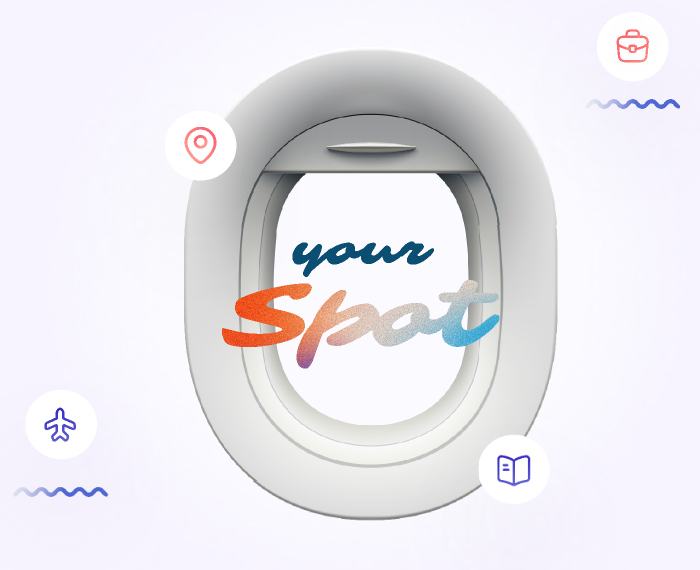


You can migrate to Canada if you have specific skills, educational background and working experience. Through various immigration programs, you can settle in Canada and contribute to the Canadian economy. But how and where to start? In this article, we shall discuss about different kinds of immigration programs, including Express Entry, Provincial Nomination Programs, etc., for kick-starting your migration plan.
Online Canadian Immigration Assessment Form
If you are a newcomer and wish to settle and obtain PR in Canada, the government offers many federal and provincial immigration programs. Let's have a closer look into some of them, from Express Entry to Family sponsorship and to refugee immigration.
If you are a skilled and experienced professional, you can apply for Canadian PR through this popular program. EE has three immigration streams that include:
Federal Skilled Worker (FSW) program
For applicants with adequate foreign work experience and/or a high level of education.
Federal Skilled Trades Program (FSTP)
For skilled tradespeople.
Canadian Experience Class (CEC)
For foreigners with a minimum of one year of working experience in Canada.
PNP benefits for those:
Canada is politically divided into 13 divisions: ten provinces and three territories. Every province and territory has its own PNP streams and requirements. These programs target students, business people, skilled or semi-skilled workers)
The AIP program is for skilled foreign workers and international students who want to settle in any of the four Atlantic provinces: Newfoundland and Labrador, Nova Scotia and New Brunswick and Prince Edward Island.
You can choose from either of the three programs for a PR:
Atlantic International Graduate Program
This is for workers with study and living experience in any one of the four Atlantic provinces.
Atlantic High-skilled Program
This is for workers with a valid job offer from an employer participating in the AIP by the Atlantic province where you intend to work.
Atlantic Intermediate-skilled Program
This program is for those with a job offer from an employer participating in the AIP. You must also have experience working in a TEER 4 or a select few TEER 1, 2, or 3 occupations.
SUV is the best option for entrepreneurs who have the skills and ability to develop a new business in Canada, create jobs for Canadians, and compete globally.
Following are the eligibility requirements to obtain an SUV
Under the International Mobility Program, foreign workers with a Letter of Support and Commitment Certificate issued by an authorized entity can apply for a short-term work permit. After receiving the work permit, they can submit their PR application under the SUV program. But, the designated entity must support the request for a work permit.
You can apply for a work permit if you meet all the eligibility requirements. However, a Commitment Certificate is valid only for six months from the date of issue. So, you must submit your application for PR before the certificate expires. Kindly check the government website for more information regarding the Start-up Visa program.
RNIP is a community-driven program that benefits skilled foreign workers who wish to live and settle in Canada. This program aims to spread the benefits of economic immigration to smaller communities by attracting more skilled workers to settle in any one of the participating communities (North Bay, Sault Ste. Marie, Sudbury, Thunder Bay and Timmins in Ontario; Altona/Rhineland and Brandon in Manitoba; Claresholm in Alberta; Moose Jaw in Saskatchewan; Vernon and West Kootenay – Trail, Castlegar, Nelson, Rossland in British Columbia).
How to apply under RNIP? You must meet all IRCC eligibility and community-specific requirements. You will also need a valid job offer from an employer in any one of the participating communities. For a better understanding of eligibility criteria and the application process, please visit the Canadian government website.
Through the Family sponsorship program, you can bring your spouses, partners, children, parents, grandparents, and relatives to study, work and live in Canada.
This immigration program benefits skilled workers who want to settle as PRs and intend to live and work in Quebec.
Quebec has a special immigration agreement with the Government of Canada. As a Quebec-selected skilled worker,
Check out more about this program on the IRCC website.
As a caregiver, you can visit Canada to become a PR or work temporarily. The applicants can choose from either of the two programs:
Home Child Care Provider Pilot and Home Support Worker Pilot Program
These five-year pilot programs allow qualified caregivers and their family members to visit Canada to become PRs. If you receive a caregiver job in Canada or have Canadian experience as a caregiver, you can apply for PR through one of these pilot programs. Depending on your experience and qualifications, the application process will be different from person to person.
Live-in Caregiver Program (LCP)
Through LCP, you can only apply for PR if you have at least two years of work experience in Canada.
However, the Caregivers program has an annual cap. The government stops accepting applications after attaining the target. So visit the website and follow the instructions as mentioned in it for obtaining PR.
The program allows individuals with relevant experience in cultural activities or athletics to immigrate permanently as self-employed persons in Canada. For eligibility, the individual must be able to contribute significantly to Canada's cultural or athletic world. Get more information regarding this program through the government website.
The program aims to address the labour shortages in the Canadian agri-food sector. It ultimately leads you to obtain PR if you are an experienced, non-seasonal workers in specific industries and occupations.
You need Canadian work experience in one or more suitable industries and occupations to apply for this program. Also, a full-time, non-seasonal job offer from a Canadian employer in any one of the eligible industries and occupations (outside of Quebec). Check for more information on the IRCC website.
Immigration, Refugees and Citizenship Canada (IRCC) defines a study permit as a document that allows foreign nationals to study in Canada at a designated learning institution (DLI). If you intend to study in Canada, you must apply for a study permit. Many students use this permit as the first step to obtain PR and, eventually, Canadian citizens.
If the government grants your study permit, they will issue an approval letter for a study permit and also an entry visa in your passport, authorizing your travel to Canada.
However, remember that a study permit is not a visa. A study permit is only valid for the length of your study program and with an additional 90 days. For entering Canada, depending on your passport type, sometimes you may need a visitor visa or an electronic travel authorization (eTA).
Most people need a work permit to work in Canada. However, you must ensure whether you require a work permit. If you want a Labour Market Impact Assessment (LMIA) under the Global Skills Strategy, then you may be eligible for a two-week processing. A work permit is often the first step toward obtaining PR for many professionals.
Let's find out the two types of work permits:
1. Open work permit
An open work permit allows a professional to work for any employer in Canada. However, an ineligible employer included in the government list cannot sponsor you. Also, note that you can only obtain an open work permit in specific situations.
2. Employer-specific work permit (closed work permit)
This permit allows you to work as mentioned in the work permit, which includes the employer's name, work duration, and location.
International Experience Canada (IEC) allows youth to travel and work in Canada for up to 2 years. If you're a citizen of a partner country, you can apply through this program. It is highly recommended to check for the details on the government website, and before you apply, know about this program to its core.
As an international student, you can work as mentioned in your study permit. After completing your studies, however, you need a work permit to work in Canada. Graduates of certain DLI are eligible to apply for a Post-graduate Work Permit (PGWP). So what if you're not eligible for a PGWP? You still have a chance to work in Canada after completing your studies. You may apply for an open or employer-specific work permit. All these hours of work experience may help you qualify for obtaining a permanent residence in Canada. Please check the website for on-campus and off-campus working guidelines.
Eligible individuals can apply for refugee status from within Canada. However, seeking asylum is not a shortcut to standard immigration rules and procedures. It is only granted for legitimate reasons. According to Canadian and international laws, asylum claimants face a rigorous process to find out whether they have a legitimate claim. To find out about how to migrate as a refugee, sponsor a refugee or for any kind of refugee services in Canada, please visit the government's website.
And so we discussed at length about Canadian migration and various immigration programs through which you can obtain PR status in Canada. Now that you know what kind of immigration program suits you, take steps further to meet all the additional requirements. But if you feel uncertain and need more clarity, please feel free to consult an authorised immigration consultant or lawyer at the earliest. A small step towards your immigration consultants can lead you to a safe landing in your dream destination.
Feel free to contact us for your queries.
Read To Know: 3725 Candidates Invited Through The Express Entry Draw